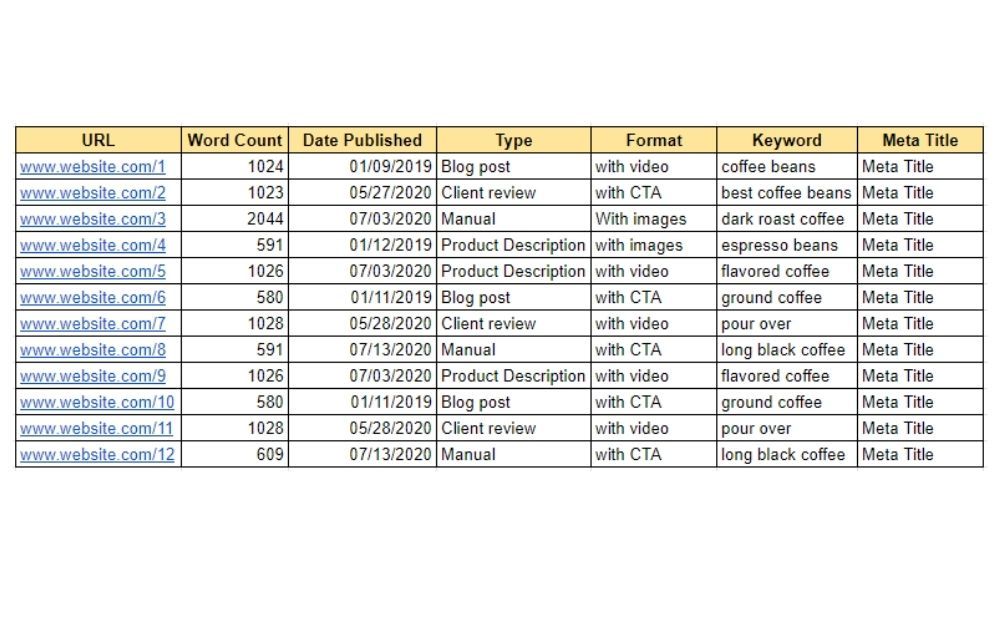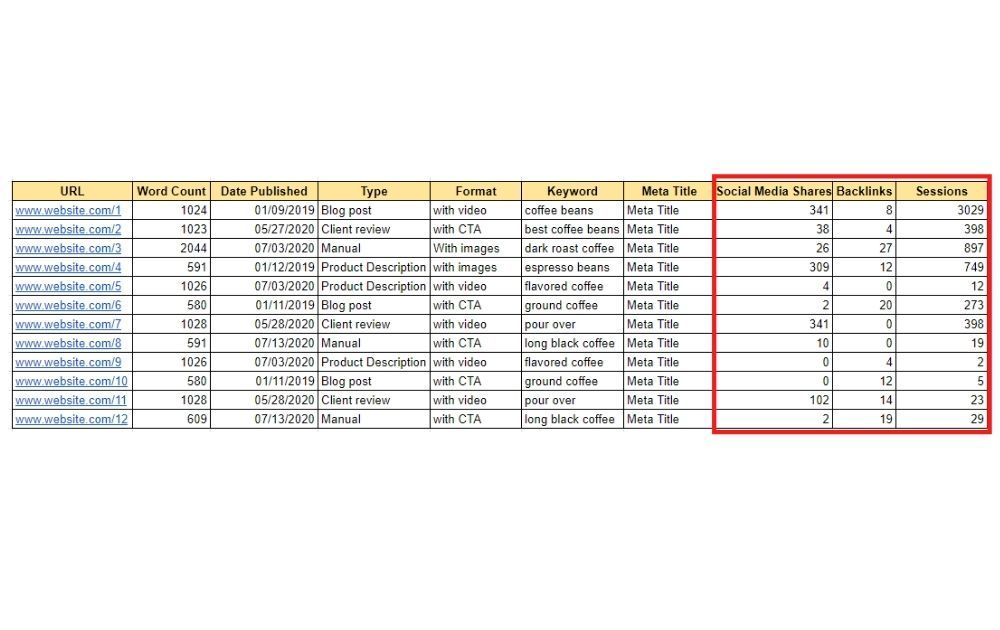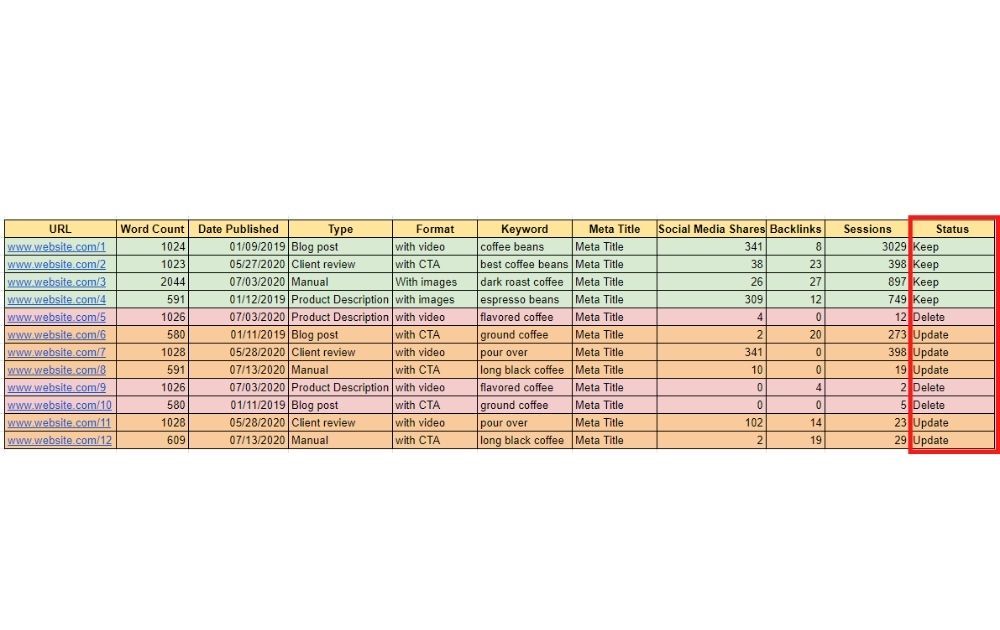16 Feb

Most businesses already know by now how important it is to produce relevant content. But alongside being consistent in providing value, did you know that a content audit is also a crucial part of generating leads and increasing sales? If you haven’t given it a thought yet, it’s time that you learn the basics and make it a part of your content marketing strategy.
What is a Content Audit?
Before we discuss the process, first things first – content audit definition. What exactly is a content audit? In a nutshell, this process entails going over the existing content in your website and sorting out which ones you can improve, reuse, or possibly, remove.
The process is both systematic and analytic. In short, you’ll need to be objective to ensure that you’re doing it right and without any bias.
Why Should You Conduct a Content Audit?
Why is a content audit useful? Generally speaking, ventures conduct a content audit to help hone their content marketing strategy.
The audit aims to achieve the following objectives:
- Identify existing content marketing examples that prove to be effective components of the strategy
- Pinpoint gaps or lapses that you’ll need to create content for
- Find existing content that may already be outdated or no longer valuable to your audience
- Improve SEO marketing results by helping reduce bounce rate, increasing traffic, and enhancing organic searchability
In short, the process gives you a bird’s eye view of the type of content you have and what you need. In the same vein, it provides a firm grasp of your strengths and weaknesses.
Consequently, you can use this info to improve your game plan and put up a marketing strategy based on real data and not just on hunches and content marketing trends.
How Frequently Should You Audit Your Content?
Clearly, every venture that relies on content marketing needs to conduct an audit to ensure that no marketing writing effort goes to waste. But how often should you do it? It largely depends on the content type.
For instance, blog posts or awareness content need to be audited every six months. After all, it takes about this long for a new piece of content to start ranking on Google. So, this period is sufficient to know whether a new strategy is helping your content turn up in organic searches.
On the other hand, conversion pages need to be audited more often, ideally every three months. If a conversion page doesn’t perform well after a quarter, it’s time to shake things up and try other tools in the arsenal.
How Do You Conduct a Content Audit?
Here are the steps in conducting a content audit:
1. Know Your Objectives
As discussed in the previous section, how you do your content audit can depend a lot on your objectives. For instance, if you want to boost your SEO results, you may want to pinpoint which pages in your website can potentially rank in the top results. In the same vein, you’ll also need to optimize internal linking and know which pages to update or delete.
On the other hand, if increasing conversions is your goal, you might need to identify the pages with the highest lead generation rates. In addition to that, you’ll also need to know what types of content appeal to people in various steps of their sales journey.
2. Create a Content Catalog
In this part, you’ll need to create an inventory of the content that you want to analyze. To do so, make a spreadsheet where you can organize your data and prepare it for analysis.
You may use the following columns on your spreadsheet: URL, Content Type (landing page, blog post, etc.), Content Format (text with video, text with images, infographic, etc.), Date, Word Count, Keyword, Metadata, and other relevant data you may need for the next step.
Here’s a content audit example organized in a spreadsheet:

3. Collect Available Data
Now, this is where the process gets a little more complex. In this step, you’ll need to collect data from multiple sources and include them in your spreadsheet. Similarly, you can use online content audit tools available to make your work a bit simpler.
If you’re doing this step the traditional way, you’ll want to add the following categories to your spreadsheet: social media shares, backlinks, and sessions. You may also include any other metrics that you need to analyze.

4. Analyze Your Data
Based on the data that you collected, analyze which pieces of content are working for you and which ones aren’t. By looking at your metrics (shares, sessions, and backlinks), you can get a clear picture of which ones to keep, update, and delete.

Keep pieces of content that remain relevant and continue to bring in traffic to your website. As they say, if it ain’t broke don’t fix it. On the contrary, content that doesn’t do well is better off taken down your website. Now there’s a gray area between what to keep and what to delete.
If you come across those, update the content and give it another chance. You can give it a final verdict the next time you do an audit.
5. Recalibrate Your Marketing Strategy
A content audit report will give you a good insight into what types of content your audience finds value in. Are how-to blogs your best performing content? Make more of those. Are your listicles not being shared despite a good amount of backlinks? Maybe you need to improve the headline and images.
The Takeaway
Just like any other business component, your content needs to be reevaluated and recalibrated every now and then to ensure that you’re still on the right track. By conducting a content audit, you keep track of what’s working and what isn’t. In the same vein, you also learn what you should do more of and do less of.
Do you need help producing high-quality content that drives traction to your business? Content Fuel is here to help out! Check out our packages and see how we can help boost your marketing strategy. Our service subscription is renewable per month, so there are no long-term contracts.










